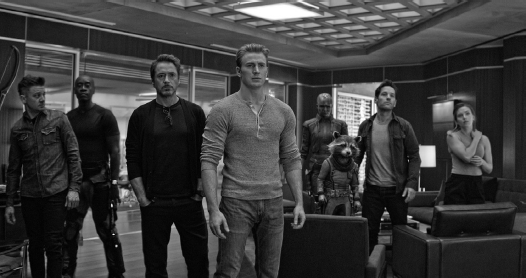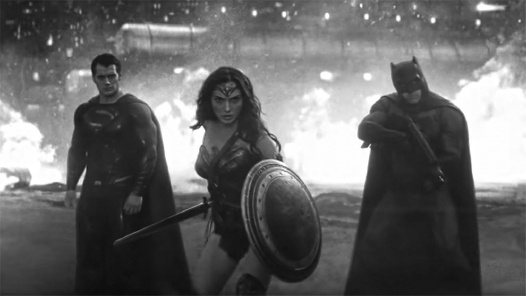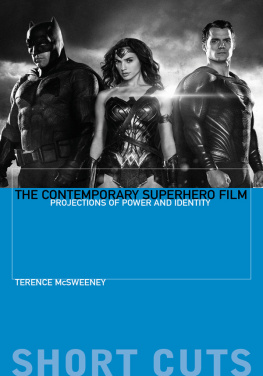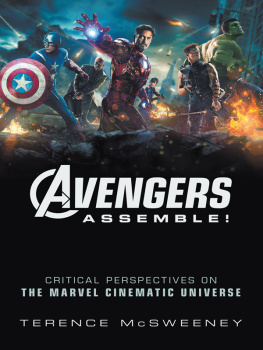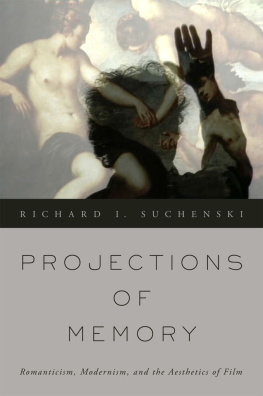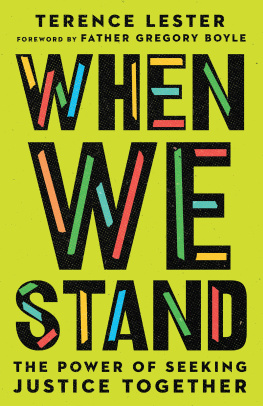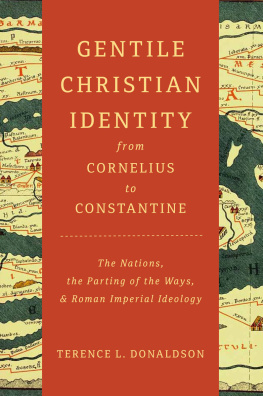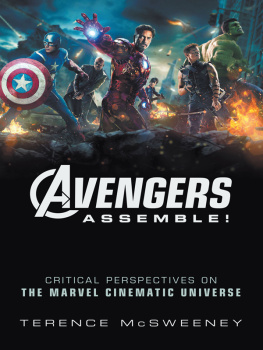Table of Contents
SHORT CUTS
INTRODUCTIONS TO FILM STUDIES
SHORT CUTS
INTRODUCTIONS TO FILM STUDIES
FOR A COMPLETE LIST OF TITLES IN THE SERIES, PLEASE SEE
THE CONTEMPORARY
SUPERHERO FILM
PROJECTIONS OF POWER AND IDENTITY
TERENCE McSWEENEY
Wallflower Press is an imprint of Columbia University Press
Publishers Since 1893
New York Chichester, West Sussex
cup.columbia.edu
Copyright 2020 Columbia University Press
All rights reserved
E-ISBN 978-0-231-54979-0
Library of Congress Cataloging-in-Publication Data
Names: McSweeney, Terence, 1974- author.
Title: The contemporary superhero film: projections of power and identity / Terence McSweeney.
Description: New York: Wallfower Press, 2020. | Series: Short cuts | Includes bibliographical references and index.
Identifiers: LCCN 2020011038 (print) | LCCN 2020011039 (ebook) | ISBN 9780231192415 (trade paperback) | ISBN 9780231549790 (ebook)
Subjects: LCSH: Superhero filmsHistory and criticism. | Comic strip characters in motion pictures. | Comic books, strips, etcUnited StatesFilm adaptations.
Classification: LCC PN1995.9.S76 M37 2020 (print) | LCC PN1995.9.S76 (ebook) | DDC 791.43/652dc23
LC record available at https://lccn.loc.gov/2020011038
LC ebook record available at https://lccn.loc.gov/2020011039
A Columbia University Press E-book.
CUP would be pleased to hear about your reading experience with this e-book at .
Cover image: Warner Bros./Photofest
Dedicated to Matt, David, Ben, Jason, Alison, Ruth, Jane, Rachel and Dan: 19921995
CONTENTS
This project has been one of the most pleasurable of my writing career, and it is a wonderful privilege to join the ranks of those who have contributed to the Short Cuts series. My thanks go to Yoram Allon for making it happen and Ryan Groendyk for seeing it through to the end. I was very fortunate to be able to write this book at a time when interest in the superhero film has never been greater, which gave me the opportunity to present many of my ideas at a range of locations, both within the academic sphere and, just as importantly, outside of it. Thank you to the British Film Institute for the invitation to speak to the public (alongside my colleague Dr. Claire Hines) as part of their New Writings series in December 2018. I would also like to thank the wonderful staff and students at my own institution, Solent University (especially Dr. Stuart Joy) and those at the Lilly Library, Indiana University, where I was lucky enough to be the recipient of their generous Everett Helm Fellowship. The archives at the Lilly Library provided an invaluable insight into the tapestry of the history of the United States, which formed and continues to sustain the superhero phenomenon. Finally, to my loving family: to a father who nurtured my love for film, a mother for all her help and support over the years, and the three people who are the inspiration for all it is that I do, Olga, Harrison, and Wyatt, to whom this book is dedicated with love.
You will give the people an ideal to strive towards. They will race behind you, they will stumble, they will fall. But in time, they will join you in the sun. In time, you will help them accomplish wonders.
Jor-El in Man of Steel (2013)
The immense popularity of live action superhero adaptations, and Hollywoods relatively recent embrace of comic book characters, reflects a shifting range of cultural, political, economic, industrial and technological issues. Despite the assumption often made by film critics, viewers and even some of the film-makers that superhero movies are merely simple-minded and juvenile entertainment (derived from silly and childish comic books), there is no simple answer for why this genre is so appealing at this moment in history.
Jeffrey A. Brown, The Modern Superhero in Film and Television: Popular Genre and American Culture (2016)
The following year in 2019 Avengers: Endgame was, of course, expected to be successful, but it was even bigger than anyone could have anticipated, even Kevin Feige himself, president of Marvel Studios and the architect of Marvels transition from comic book publisher to veteran film studio, with an opening weekend of $357 million at the domestic box office, a full $100 million more than the record set in the previous year by Avengers: Infinity War, and an international gross of more than a billion dollars in three days, two feats that had never even come close to being achieved before. The film ultimately passed James Camerons Avatar (2009) as the most successful film ever made, with a gross of over $2.79 billion.
It was not always like this. Superheroes have been a perennial part of popular culture since the appearance of Superman (April 1938), Batman (May 1939), Captain America (March 1941), and Wonder Woman (October 1941) in the first editions of their respective comic books, and had intermittently reached the television and cinema screens in the subsequent decades. But while the 1970s and 1980s saw the groundbreaking release of Superman (1978) and Tim Burtons Batman (1989), both of which began hugely successful, long-running franchises and inspired generations of children to play with action figures, eat from branded lunchboxes, and sleep on pillow cases adorned with their heroes faces, they did not inspire the wave of additions to the genre the likes of which we have experienced since the turn of the millennium that are the focus of this book.
Fig. 0.1 The superhero film as the most popular genre around the globe: Catastrophe or phenomenon? The record-breaking Avengers: Endgame (2019).
Fig. 0.2 The superhero genre exemplifies the American film industrys transition from the dominance of the sequel to the universe model in films like Batman v Superman: Dawn of Justice (2016), where three iconic figures share the screen for the first time ever.
More than this, some have speculated that the cultural dominance of the superhero has affected the real world: that the emergence of Donald Trump might be blamed on the superhero film or that certain films from the genre are so important for audiences that Black Panther could be described as a defining moment for Black America?
, as one might expect, offers a framing of the parameters of the study. Should the superhero film be regarded as a genre in its own right? If so, what are its codes and conventions? What is its relationship to the comic books that formed it? For assistance we turn to Peter Coogans indispensable study of the form Superhero: The Secret Origin of a Genre (2006), written just before what I have called the superhero renaissance had solidified. The opening case study takes on one of the most iconic heroes of the genre, Spider-Man, chosen especially because he is a character who helped define many of the codes and conventions discussed in both comic book and cinematic iterations. The second case study, the Deadpool series, provides a productive counterpoint to Spider-Man, as the character and the films he has featured in offer several challenges to these very same codes and conventions, but in intriguing ways adhere to them just as frequently.


